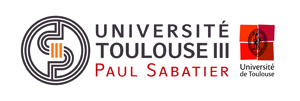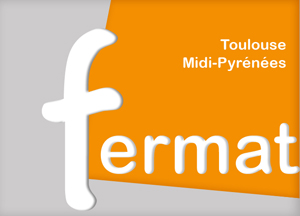Couplage multiphysique pour la combustion de l’hydrogène dans les milieux divisé
François Muller
Jeudi 15 juin 14 h 00
Amphithéâtre Nougaro
Abstract
Global warming pushes us to ameliorate technologies for reducing greenhouse gas emissions. Hydrogen combustion can be one of the keys to solve this problem, due to its decarbonised nature and because hydrogen can serve as storage for in- termittent renewable electricity sources. Nevertheless, burning hydrogen raises several challenges compared to hydrocarbon, due to the high reactivity and dif- fusivity of hydrogen molecules. Therefore, actual burners have to be improved to achieve stable and reliable combustion of hydrogen mixtures. Furthermore, due to the absence of carbon atoms, only thermal NOx are produced slowly, in the burnt gas, and so by cooling those gases, it is possible to strongly reduce their formation. Porous burners are considered, in this work, to see their performances in the resolution of those challenges. Indeed the high conductivity and convective heat exchange of the porous media increase the heat transport from the burnt gas to the reactants. The resulting gas preheating reduces the lean inflammability limit. Consequently, stable combustion of ultra-lean mixtures with smaller gas temperatures can be achieved. Although porous media combustion was exten- sively investigated for methane combustion, studies on the influence of hydrogen addition are seldom. To study flame wall interactions and flow dynamics at the pore scale, two approaches were employed in this thesis. First, experimental in- vestigations with ceramic foams were carried out. The fundamental stabilisation mechanisms predicted by one-dimensional porous burners model were validated with methane-air mixtures. It is shown how the flame position is shifted from the porous media entry to the middle of the burner for increasing flow rates. Then the differences between hydrogen and methane combustion within ceramic foams of different pore sizes are investigated. Contrary to the volume-averaged model pre- dictions, higher methane blow-off equivalence ratios were obtained for smaller pore sizes. This difference is attributed to pore scale flame stretch effects and to the radiative transport increasing with the pore size. Furthermore, hydrogen flames remain anchored at the porous media entry for high pore sizes and ultra-lean mix- tures with flow velocities much above the burning velocity of an adiabatic freely propagating flame. In the second part, direct pore-scale numerical simulations are carried out in two-dimensional canonical geometries and on a three-dimensional geometry obtained from X-ray tomography of a ceramic foam. The strong flame anchoring is identified to be a consequence of preferential diffusion effects. These effects compensate for the solid temperature decrease at the porous media entry when the flow rate increases. Moreover, in addition to heat recirculation, the burn- ing rate enhancement currently obtained in porous burners is shown to result from a flame surface increase and increased radicals transports due to the pore scale velocity gradients leading to hydrodynamic dispersion and flame wrinkling. Un- steady flame behaviours like pulsating flames at the top of the burner and flames with repetitive extinction and ignition are also identified at small flow rates. These pathological operating regimes are also obtained experimentally and need to be avoided in practical applications. To conclude, a heat harvester was constructed and its performances tested. Heat recovery efficiencies higher than 90 % were achieved for NOx emission levels smaller than 6 mg/kWh.





